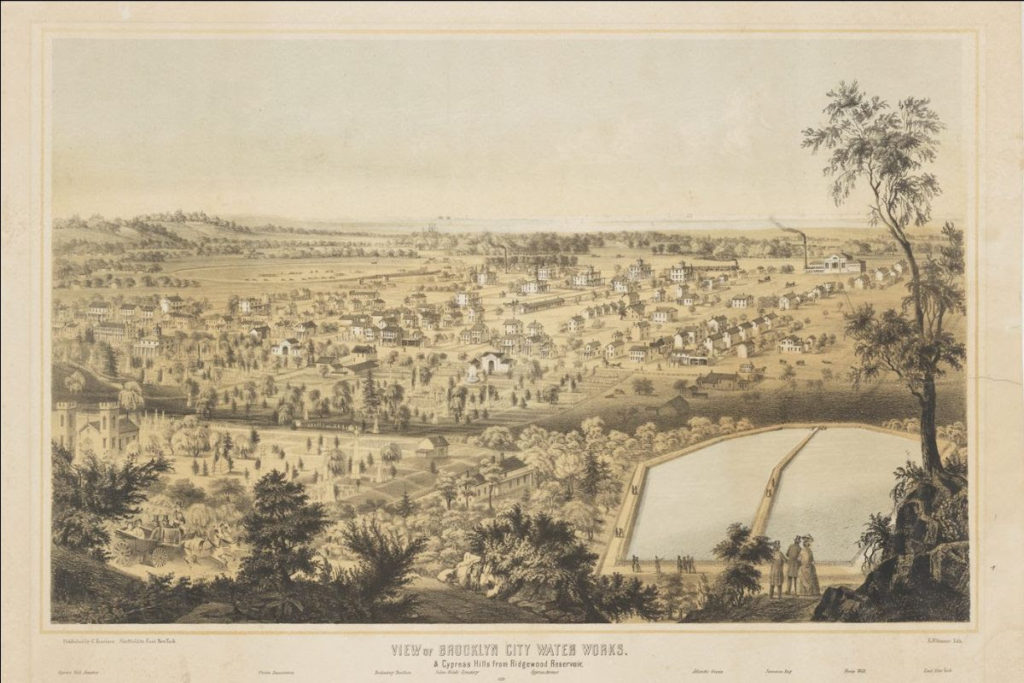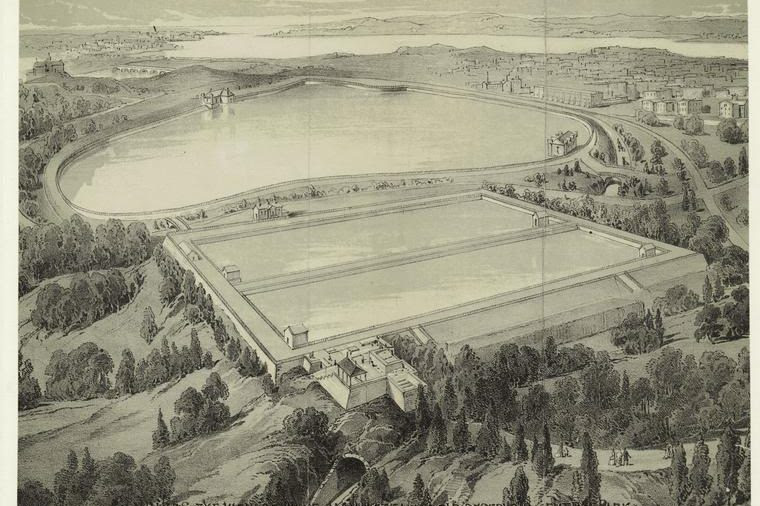Monday, February 22, 2021 – When subway design was not utilitarian


PLEASE SEE OUR SPECIAL EDITION ON
RIHS.US.
FROM DEBORAH DORFF WHO JUST SPENT HER WEEK IN HER COLD, DARK AND SNOWED IN HOME IN AUSTIN, TEXAS.
293rd Edition
Monday,
February 22, 2021
The Abandoned 1904
City Hall Subway Station
FROM A DAYTONIAN IN MANHATTAN

Rafael Guastavino’s tiled arch construction was not a new idea in 1900; actually it had been used in Europe since ancient times. He simply rediscovered and improved it, yet earning himself a powerful reputation in doing so.
Guastavino, born in Valencia, Spain and trained as an architect in Barcelona, immigrated to the U.S. after he earned a medal of merit at the Philadephila Centennial Exposition in 1876. He founded the Guastavino Fireproof Construction Company and marketed his tiled arch construction as the “Guastavino Tile Arch System.”
His construction designs fit well with the popular Arts and Crafts movement of the period. Interlocking terra cotta tiles were installed in layers of mortar which enabled him to create strong arches with no visible means of support. Although the clay tiles were, individually, fragile; together they were incredibly strong — often compared to the inherent strength of an eggshell.
While Guastavino was perfecting his tile construction, New York City was planning a subway system. Not only could the 19th Century elevated trains no longer efficiently move the multitudes of New Yorkers, they spewed ashes and soot and were noisy. Through the Rapid Transit Act of 1894 the State had authorized the city to build and run a subway. Six years later things got underway with the formation of the Interborough Rapid Transit Company.
At what would become the City Hall Station, Mayor Robert Van Wyck put foot to silver shovel and formally initiated construction on the subway system. Architects George Lewis Heins and Christopher Grant LaFarge were commissioned to design the stations which were functional, white-tiled, nearly-claustrophibic spaces with individual mosaic themes or, in some cases, ornate tiles proclaiming the stations.
Except for City Hall Station.
The new mayor, George B. McCllellon, was explicit. He wanted it to be a showplace. “My station under City Hall,” he insisted, “will be more beautiful than the rest.” Calling on Rafael Guastavino, Heins and LaFarge incorporated his graceful soaring tiled arches, creating a vast, elegant station. Twelve brass chandeliers illuminated the earthy ochre, green and black Arts and Crafts tiles. Nine stunningly ornate leaded glass skylights pierced the ceiling of every fourth bay. On the opposite wall from the platform large bronze plaques honored the architects, the engineers and the politicians responsible.
As the system was being readied for opening, the Interborough Rapid Transit described the station. “It might readily have been supposed that the limited space and comparative uniformity of the underground stations would afford but little opportunity for architectural and decorative effects. The result has shown the fallacy of such a supposition.
” At 1:00 on October 27, 1904 ceremonies marked the opening of the New York City Subway at the City Hall Station. After customary speeches, Mayor McClellan personally turned the silver key and acted as motorman, transporting the dignitaries far uptown to the 137th Street Station. At 7:00 that evening, paying passengers (admission was by five-cent ticket) were admitted.


According to The New York Times that day, “The rush for tickets to the opening continued unabated yesterday, and scores of demands had to be refused, with the result that the applicants went away declaring they had been slighted.” More than 7,100 paying passengers entered the City Hall Station that evening; a fraction of the system-wide horde of New Yorkers eager to ride the new system.
The City Hall Station was unusual in that, because it was situated at the beginning of the loop where trains would swing around to head back north, its platform was tightly curved. Eventually lack of use and this design element would doom the station.

During World War II the beautiful skylights were blacked out for security purposes, eventually becoming covered over. Then, because the nearby Brooklyn Bridge Stop was more convenient, fewer and fewer passengers were using the elegant station. In 1945 the NYC Board of Transportation shut down the City Hall Station, demolishing the ornamental kiosks and sealing the entrances under concrete slabs. The tiled arches and brass chandeliers were thrust into tomb-like darkness and the station was essentially forgotten. However, Lexington Ave. Local (#6 today) trains continued to use the station’s loop tracks to change direction at Brooklyn Bridge, and do so to this day, as noted in the last sentence.
Any hope that the City Hall stop would be resurrected was smashed when modern train cars, the R17s, introduced on the IRT in 1954, had door positions that could not safely open on the sharp curve of the platform. The wide gaps created between the platform and cars would be unsafe and logistically unreasonable to attempt to correct.
Explanations: The Transit Authority was not created until 1953. The older model cars had doors at the extreme car ends, whereas the R17 cars were the same length, 51 feet, but had a different door arrangement that created dangerous gaps on curved platforms.
In 1995 plans were made to rehabilitate the stop as an annex to the Transit Museum. Over $1 million was granted by the federal government and the Metropolitan Transportation Authority to restore the space and, for awhile, was opened for tours. However, in 1998 after terrorist bombings around the globe, Mayor Rudolph Guiliani shut down the space again in concern over the accessibility to the area under City Hall.
Today tours are again conducted, although sporadically. While some of the skylights have suffered severe damage, some are surprisingly intact. There is some water damage and the once elegant chandeliers are covered in decades of gray dust. Yet the grandeur of Mayor McClellan’s showpiece is still evident over a century after its opening.

You can ride thru the station on the #6 train as it turns to start its uptown run. Though the station is not open you can get a glance of it from the train.
Save the Date
A Tale of Two Waterworks
Talk by Jeffrey Kroessler
presented as part of NYC H20’s Ridgewood Reservoir for the 21st Century
Tuesday, Mar 2, 2021 6:00pm–7:15pm
In conjunction with the current Community Partnership Exhibition Ridgewood Reservoir for the 21st Century situated around the historic Watershed Model at the Queens Museum,
We are pleased to host A Tale of Two Waterworks, talk by Jeffrey Kroessler presented by NYC H20. The presentation will be followed by Q&A with attendees.
This event will take place on Zoom.
To join please see queensmuseum.org
The history of the water systems of New York City and the once independent City of Brooklyn is not only a story of engineering triumph, but a story about the public spirit. Clean water was essential for economic prosperity, health, sanitation, and municipal growth. When New York reached into Westchester and the Catskills for water sources, and when the City of Brooklyn tapped the Long Island aquifer, what were the environmental, economic and political factors in play? A Tale of Two Waterworks will explore the history of the two water systems, how and why they were built, how they determined the city’s future, and the story behind their unification.
Jeffrey A. Kroessler is the Interim Chief Librarian of the Lloyd Sealy Library, John Jay College of Criminal Justice. He is the author of New York, Year by Year, The Greater New York Sports Chronology, and the forthcoming Sunnyside Gardens: Planning and Preservation in a Historic Garden Suburb.
Image Credits: (black and white image) Drawing with aerial view of the two rectangular-shaped reservoir basins built in NYC in 1842, prior to the construction of Central Park, showing the larger oval-shaped reservoir which would replace them in1858. (color image) Lithograph,1859, showing the original two Ridgewood Reservoir basins in the City of Brooklyn, completed by 1858.

MONDAY PHOTO
Send your entry to ROOSEVELTISLANDHISTORY@GMAIL.COM

WEEKEND PHOTO
BODLEIAN LIBRARY, OXFORD
ARLENE BESSENOFF, HARA REISER & ANDY SPARBERG GOT IT RIGHT

Text by Judith Berdy
Thanks to Bobbie Slonevsky for her dedication to Blackwell’s Almanac and the RIHS
Thanks to Deborah Dorff for maintaining our website
Edited by Deborah Dorff
All image are copyrighted (c)
Sources:
A DAYTONIAN IN MANHATTAN
NY DAILY NEWS PHOTO
JUDITH BERDY
FUNDING PROVIDED BY ROOSEVELT ISLAND OPERATING CORPORATION PUBLIC PURPOSE GRANTS CITY COUNCIL REPRESENTATIVE BEN KALLOS DISCRETIONARY FUNDING THRU DYCD


Copyright © 2021 Roosevelt Island Historical Society, All rights reserved.Our mailing address is:
rooseveltislandhistory@gmail.com



Leave a comment